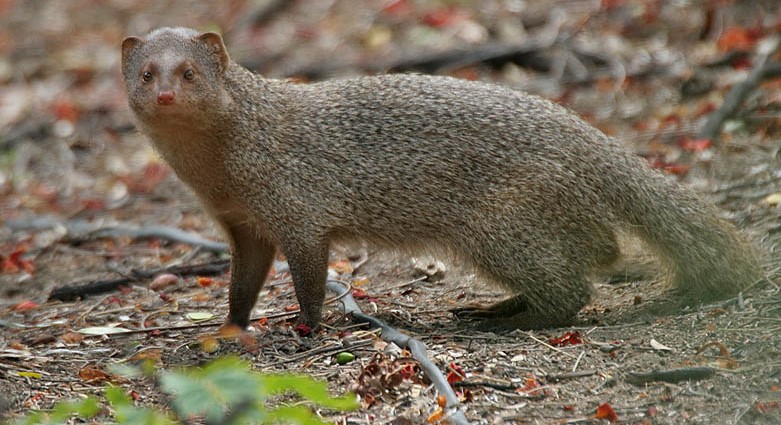Subscribe for all my updates and don't miss a thing! Sign me up!
Are There Mongoose In Jamaica?
What's Special About Them?
Sharing Is Caring! Share this awesome content with your friends now.
by Venesha Johnson | Associate Writer
A famous Jamaican saying is, “if you see a mongoose running across the road, it’s good luck, but if the mongoose turns back, it is bad luck”. Well, just a few hours ago, I saw 3 of the little animals running across the street behind each other. I am hoping this means that my good luck will be tripled.
New! Take a piece of Jamaica with you💃!
Savour the memories! Now you can get your authentic Jamaican souvenir items, as well as traditional Jamaican herbs, spices and housewares on our popular e-store. Click Here to learn more.
And, if you ever need a trustworthy and knowledgeable local guide, consider booking a private tour with us!
The question was asked, “are there mongoose in Jamaica,” By now, you know the answer to that is a resounding yes! There are many here in Jamaica, some would say too many. Whether you live in rural or urban Jamaica, you will eventually run into a mongoose.
For those who don’t know, you may be asking what are mongooses. The Herpestidae family of small terrestrial carnivorous mammals includes the mongoose. In the 18th and 19th centuries, the English word "mongoose" was spelt "mungoose."
What do they look like?
Mongooses have long bodies and faces, short legs, and long, tapering tails. The grizzly or brindled creatures also have small, rounded ears. A few of them have heavily marked coats that resemble mustelids. They mainly use their non-retractile claws for digging. Similar to goats, mongooses have small, ovular pupils.
The majority of species have a sizable anal scent gland that is used to mark territory and indicate reproductive status. In short, they look like a cross between large rats and squirrels.
What do they eat?
Insects, crabs, earthworms, lizards, birds, and rodents make up most of a mongoose's diet. However, they also consume carrion and eggs.
Which Mongoose can you find in Jamaica?
The animal imported into Jamaica is the griseus, a species from India. It eats snakes, rats, lizards, and other animals that humans find repulsive in its natural habitat. It is grey in colour with darker hues on its head and legs, blackish feet, and a black tip on the tail end.
There is a fine, short, reddish underfur underneath the longer grey or white-ringed hairs. The animal's tail is about eighteen inches long, and its body measures about twenty-one inches when it is fully grown.
How did the Mongoose come to Jamaica?
There were nine animals brought to the island from India in 1872 by William Bancroft Espeut to manage the rodent population on his estate at Spring Gardens in Portland.
Although the mongoose initially seemed to be advantageous, saving about £45 000 in sterling annually in pest control costs, the creatures were ultimately held accountable for decreasing the availability of fruit, fish, and crab.
They also killed insects, yellow snakes, ground lizards, and other animals that were essential to the ecosystem on the island. All the initial savings in pest control was halted as the rapidly increasing population of mongooses also preyed on farm animals and poultry farmers were the most adversely affected.
With its quick and prolific reproductive abilities as well as its roving and vagabond nature, it was discovered in every area of the island within a very short period, from the seashore to the highest mountain peaks, the highest of which rises 70.3 feet above sea level.
Interestingly, the mongoose, which in its native India, was in no way a tree-climbing animal, has evolved into one in Jamaica because the population of ground-feeding and egg-laying birds has declined, forcing the animal to turn to trees to increase its food supply.
While the mongooses were introduced to the island so many years ago as a solution to the pest problem at the time, they have now become a huge problem themselves.
They have a very high reproduction rate of six times a year, yes six! And each time there are five to ten young. This makes it rather challenging to control the animals and it doesn’t seem there is much we can do about it.
Sharing IS Caring! Please help me get the message out by sharing this article with your friends on social media (links below). Thnx ;-)
If you found this page useful, please consider subscribing to my weekly newsletter, to get even more.
It tells you each week about the new information that I have added, including new developments and great stories from lovers of Jamaica!
Return to Jamaican Animals from Are There Mongoose In Jamaica?
Return to My Island Jamaica Homepage from Are There Mongoose In Jamaica?
References & Sources For Are There Mongoose In Jamaica?
- En.wikipedia.org. 2022. Mongoose - Wikipedia. [online] Available at: [Accessed 16 September 2022].
- En.wikisource.org. 2022. Popular Science Monthly/Volume 54/November 1898/The Mongoose in Jamaica - Wikisource, the free online library. [online] Available at: [Accessed 16 September 2022].
- Writer, S., 2022. Facts on Jamaica: How Much Do You Know about the Jamaican Mongoose? - Jamaicans.com. [online] Jamaicans.com. Available at: [Accessed 16 September 2022].
Are There Mongoose In Jamaica? | Written: September 16th, 2022
New! Get My Latest Book👇🏿
|
You asked, I've answered! You no longer need to save for months or years, to enjoy paradise! I spilled the beans! sharing my top tips on finding cozy accommodations and secret gems, only the way a native could! Click Here to pick it up on my e-store and start saving now! |
See The Best Of Jamaica - In Videos!
|
My channel reaches over 140,000 subscribers worldwide and has leveraged over 11 million views, sharing, what I call 'The Real Jamaica'. Subscribe today and join our family of viewers. |
Read More ...
New! Experience The REAL Jamaica!
Book Your Private Tour here and experience Jamaica the way we (locals) do!
P.S. Didn't find what you were looking for?
Still need help?
Click Here to try our dependable and effective Site Search tool. It works!
Or, simply click here and here, to browse my library of over 500 questions and answers! Chances are someone already asked (and got an answer to) your question.











New! Comments
Have your say about what you just read! Leave me a comment in the box below.